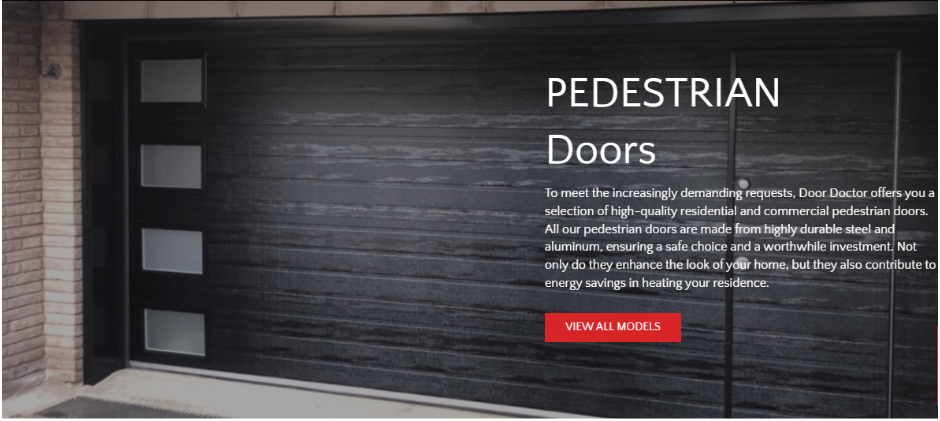A garage door is more than just a functional entry point—it’s a key feature of your home’s security, curb appeal, and energy efficiency. Whether you’re building a new home or replacing an old or damaged garage door, professional garage door installation can dramatically improve the safety, style, and value of your property.
In this comprehensive guide, we’ll cover everything you need to know about garage door installation, including the types of garage doors available, the benefits of professional installation, what to expect during the process, and important factors to consider when choosing a new door.
Why Garage Door Installation Matters
A properly installed garage door ensures:
- Smooth and safe operation
- Enhanced security for your home and belongings
- Improved energy efficiency
- Increased home value and curb appeal
An incorrectly installed garage door, on the other hand, can lead to frequent breakdowns, safety hazards, and higher energy costs. That’s why hiring a qualified professional to handle your garage door installation is always the best approach.
Types of Garage Doors
Garage doors come in a variety of materials, styles, and configurations. Choosing the right type depends on your aesthetic preferences, climate, budget, and how you use your garage.
1. Sectional Garage Doors
These are the most common residential garage doors. They consist of panel sections connected with hinges, allowing the door to bend and slide up along tracks.
- Available in insulated and non-insulated options
- Ideal for most climates and architectural styles
2. Roll-Up Garage Doors
Commonly found in commercial settings, roll-up doors are made from steel slats that coil above the opening. Some residential properties with limited ceiling space use this design as well.
- Durable and space-saving
- Often used in high-traffic or compact areas
3. Side-Hinged Garage Doors
These traditional doors swing open from the center, like barn doors. They are ideal for garages that are used as workshops or storage spaces.
- Easy manual operation
- Classic look with modern materials available
4. Tilt-Up Garage Doors
These doors consist of a single panel that tilts up and slides into the garage ceiling. While less common today, they are still used in certain home designs.
- Simple design, fewer moving parts
- Requires more clearance space
5. Custom Garage Doors
For homeowners seeking a distinctive appearance or enhanced functionality, custom garage doors can be crafted from a variety of materials, including wood, glass, and composite materials.
- Highly customizable
- Often more expensive, butit boosts curb appeal significantly
Materials to Consider
- Steel: Strong, affordable, and low-maintenance. Available with or without insulation.
- Aluminum: Lightweight and rust-resistant. Good for modern designs.
- Wood: Offers a rich, natural look but requires more maintenance.
- Fiberglass: Durable and resistant to dents. Ideal for coastal environments.
- Vinyl: Resistant to dents and cracking, with minimal maintenance needed.
Garage Door Installation Process
Here’s what to expect when you hire a professional for garage door installation:
1. Assessment and Measurement
The installer will visit your home to inspect your garage, take precise measurements, and discuss your needs, preferences, and budget.
2. Door Selection and Customization
Based on your requirements, the installer will assist you in selecting the ideal door, taking into account style, material, insulation level, and color.
3. Removal of Old Door (if applicable)
If you’re replacing an existing garage door, the team will safely remove and dispose of the old one.
4. Installation
The new door will be installed, including tracks, springs, cables, and integration with the opener. The process typically takes a few hours for standard doors.
5. Testing and Safety Check
Once installed, the technician will test the door’s operation and all safety features, including the auto-reverse sensors and manual release.
6. Cleanup and Final Walkthrough
Your property will be cleaned up, and you’ll be shown how to operate and maintain your new garage door.
Benefits of Professional Installation
- Expertise: Trained technicians know how to install doors safely and correctly.
- Tools and Equipment: Professionals use specialized tools for precise installation.
- Warranty Protection: Most manufacturers require professional installation to be eligible for warranty coverage.
- Safety: Garage door components, especially springs, are under high tension and can cause serious injury if mishandled.
Factors to Consider Before Installation
- Insulation Needs: Opt for an insulated door to enhance energy efficiency and temperature control.
- Security Features: Consider models with reinforced locks and smart technology.
- Style and Design: Your garage door should complement your home’s architecture.
- Budget: Balance aesthetics, durability, and functionality with your budget.
- Maintenance Requirements: Some materials require more upkeep than others.
Conclusion
Garage door installation is an important home improvement project that enhances functionality, appearance, and safety. With numerous styles, materials, and features to choose from, it’s easy to find a door that suits your home’s needs and personal taste.
For the best results, always trust a certified garage door professional to handle the installation. A high-quality door, properly installed, will provide reliable performance and long-term value for years to come.

